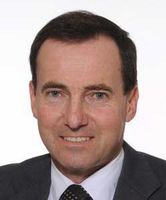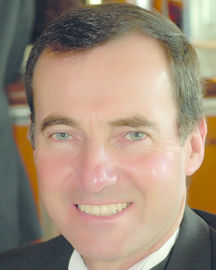Central Auckland, East Auckland, North Auckland, South Auckland, West Auckland > Private Hospitals & Specialists >
Mr Bruce Peat - Plastic Surgeon & Hand Surgeon
Private Service, Plastic Surgery
Today
8:00 AM to 6:00 PM.
Description
He undertook five years of postgraduate training in Hand Surgery (USA), Microsurgery (Canada) and Reconstructive Plastic Surgery (England), including work as an Assistant Professor of Plastic Surgery in the USA.
Bruce returned to Auckland in 1994 as a Consultant Plastic Surgeon at Middlemore Hospital, subsequently working as Deputy and then Head of the Plastic Surgery Department, where he remains as one of the senior Plastic Surgeons.
He has published significant articles in leading Plastic Surgery journals and is a member of the New Zealand Association of Plastic Reconstructive and Aesthetic Surgeons and the New Zealand Society for Surgery of the Hand. He is currently an Examiner in Plastic Surgery for the Royal Australasian College of Surgeons.
- Reconstructive surgery: is performed on parts of the body that are abnormal or have been affected by a birth defect, accident or disease. This includes hand differences from birth, restorative surgery after trauma or reconstruction (including skin grafts and flaps) following cancer. Surgery is usually performed to improve function, but may also be performed to bring the appearance of a part of the body as close as possible to normal.
- Aesthetic or cosmetic surgery: improves appearance or body image by reshaping features of the face or body e.g. breast enlargement, face lift, liposuction.
Bruce focuses on Reconstructive Plastic Surgery particularly in relation to skin cancer, trauma and hand surgery.
Consultants
-

Mr Bruce Peat
Plastic Surgeon & Hand Surgeon
Referral Expectations
Fees and Charges Description
New Consultation fee (up to 30 min): $300
ACC Co-Payment: $50
Follow-up Consultation: $150
Post-operative follow-up visits for 6 weeks after surgery: No charge.
Mr Bruce Peat is a Southern Cross Affiliated Provider for the following areas :
- Plastic Surgery (non cosmetic):
- Carpal tunnel release with local anaesthetic
- Skin Cancer:
- Consultations (skin)
- Skin biopsy
- Skin lesion removal
Hours
8:00 AM to 6:00 PM.
| Mon – Fri | 8:00 AM – 6:00 PM |
|---|
The reception staff will book a consultation time for you.
Clinics at Eastcare:
Wednesday morning.
Minor surgery at Eastcare:
Monday morning and Thursday afternoon.
Clinics at Handworks:
alternate Thursday afternoons.
Procedures / Treatments
A naevus or mole is a common skin growth composed of special pigment-producing cells. Naevi can vary in size, with small naevi requiring only simple surgery for removal, while the removal of larger naevi may require more than one operation and may involve skin grafts.
A naevus or mole is a common skin growth composed of special pigment-producing cells. Naevi can vary in size, with small naevi requiring only simple surgery for removal, while the removal of larger naevi may require more than one operation and may involve skin grafts.
Problems with the appearance or function of the hand can be the result of injury, birth defects or degenerative conditions. Carpal Tunnel Syndrome A pinched nerve in the wrist that causes tingling, numbness and pain in your hand may require surgery to make more room for the nerve. This operation is usually performed under local anaesthetic (the area being treated is numb but you are awake). Arthritis Arthritis is a condition in which a joint and the surrounding tissue become swollen and painful. If surgery is necessary, it may involve replacement of the joint with an artificial joint or removal or repair of swollen or damaged tissue. Birth Abnormalities Surgery may sometimes be required for hand abnormalities that are present at birth such as too many or too few fingers, webbed fingers or joints that won’t bend. Injuries Damage to tendons, nerves, joints and bones in the hand may require surgical repair. In some cases, tissue may be transferred from a healthy part of your body to the injured site (grafting).
Problems with the appearance or function of the hand can be the result of injury, birth defects or degenerative conditions. Carpal Tunnel Syndrome A pinched nerve in the wrist that causes tingling, numbness and pain in your hand may require surgery to make more room for the nerve. This operation is usually performed under local anaesthetic (the area being treated is numb but you are awake). Arthritis Arthritis is a condition in which a joint and the surrounding tissue become swollen and painful. If surgery is necessary, it may involve replacement of the joint with an artificial joint or removal or repair of swollen or damaged tissue. Birth Abnormalities Surgery may sometimes be required for hand abnormalities that are present at birth such as too many or too few fingers, webbed fingers or joints that won’t bend. Injuries Damage to tendons, nerves, joints and bones in the hand may require surgical repair. In some cases, tissue may be transferred from a healthy part of your body to the injured site (grafting).
Scar appearance can be improved by various methods including a surgical procedure known as scar revision. This usually involves cutting out the old scar, closing the wound with stitches and, in some cases, moving the scar so that it is hidden by natural features of the body. Scar revision is usually performed under local anaesthesia (the area around the scar is numbed by injecting a local anaesthetic). Sometimes you may also be given steroid injections at the time of surgery. Stitches may be removed in 1-2 weeks. You may need to take a few days off work after the surgery.
Scar appearance can be improved by various methods including a surgical procedure known as scar revision. This usually involves cutting out the old scar, closing the wound with stitches and, in some cases, moving the scar so that it is hidden by natural features of the body. Scar revision is usually performed under local anaesthesia (the area around the scar is numbed by injecting a local anaesthetic). Sometimes you may also be given steroid injections at the time of surgery. Stitches may be removed in 1-2 weeks. You may need to take a few days off work after the surgery.
Skin lesions can be divided into two groups: benign (non-cancerous): e.g. moles, cysts, warts, tags. These may be removed to prevent spreading (warts), stop discomfort if the lesion is being irritated by clothing/jewellery or to improve appearance. malignant (cancerous): basal cell carcinomas are generally slow growing and do not spread to other parts of the body. Squamous cell carcinomas vary in their aggressiveness. Melanoma is the most serious skin cancer that can spread to other parts of the body; urgent removal is recommended. Surgery to remove skin lesions usually involves an office or outpatient visit, local anaesthesia (the area around the scar is numbed by injecting a local anaesthetic) and sutures. Sutures may be removed in 1-2 weeks. You may need to take a few days off work after the surgery.
Skin lesions can be divided into two groups: benign (non-cancerous): e.g. moles, cysts, warts, tags. These may be removed to prevent spreading (warts), stop discomfort if the lesion is being irritated by clothing/jewellery or to improve appearance. malignant (cancerous): basal cell carcinomas are generally slow growing and do not spread to other parts of the body. Squamous cell carcinomas vary in their aggressiveness. Melanoma is the most serious skin cancer that can spread to other parts of the body; urgent removal is recommended. Surgery to remove skin lesions usually involves an office or outpatient visit, local anaesthesia (the area around the scar is numbed by injecting a local anaesthetic) and sutures. Sutures may be removed in 1-2 weeks. You may need to take a few days off work after the surgery.
- benign (non-cancerous): e.g. moles, cysts, warts, tags. These may be removed to prevent spreading (warts), stop discomfort if the lesion is being irritated by clothing/jewellery or to improve appearance.
- malignant (cancerous): basal cell carcinomas are generally slow growing and do not spread to other parts of the body. Squamous cell carcinomas vary in their aggressiveness. Melanoma is the most serious skin cancer that can spread to other parts of the body; urgent removal is recommended.
If the scar to be revised or skin lesion being removed is particularly large, a skin graft may be performed. This involves transferring skin from another, healthy part of the body (donor site) to the injured site (recipient site). While skin grafting can improve the function of a damaged area, some scarring will be left at both the donor and recipient sites. Skin grafting is likely to be performed under general anaesthesia (you will be asleep during the procedure) in a hospital. The skin graft may be a split skin graft, often taken from the thigh, that heals in about 2 weeks. Alternatively, to achieve a better cosmetic result, a full thickness piece of skin may be transferred.
If the scar to be revised or skin lesion being removed is particularly large, a skin graft may be performed. This involves transferring skin from another, healthy part of the body (donor site) to the injured site (recipient site). While skin grafting can improve the function of a damaged area, some scarring will be left at both the donor and recipient sites. Skin grafting is likely to be performed under general anaesthesia (you will be asleep during the procedure) in a hospital. The skin graft may be a split skin graft, often taken from the thigh, that heals in about 2 weeks. Alternatively, to achieve a better cosmetic result, a full thickness piece of skin may be transferred.
The appearance of ears that are misshaped or protruding (‘bat ears’) can be improved surgically. This type of operation is often carried out in children. Cuts (incisions) are made behind the ears through which the cartilage in the ear can be reshaped or removed. The surgery lasts 1-2 hours and can be performed under local anaesthetic (the area treated is numb but you are awake), allowing you to go home the same day. For children, the procedure would be performed under general anaesthetic (they sleep through it) and they will remain in hospital overnight. You will need to wear head bandages for about 1 week and will probably be able to return to normal daily routines after that.
The appearance of ears that are misshaped or protruding (‘bat ears’) can be improved surgically. This type of operation is often carried out in children. Cuts (incisions) are made behind the ears through which the cartilage in the ear can be reshaped or removed. The surgery lasts 1-2 hours and can be performed under local anaesthetic (the area treated is numb but you are awake), allowing you to go home the same day. For children, the procedure would be performed under general anaesthetic (they sleep through it) and they will remain in hospital overnight. You will need to wear head bandages for about 1 week and will probably be able to return to normal daily routines after that.
Public Transport
The Auckland Transport Journey Planner will help you to plan your journey.
Parking
There is ample free off street parking at the Eastcare clinic.

Contact Details
216 Great South Road, Newmarket, Auckland
Central Auckland
8:00 AM to 6:00 PM.
-
Phone
(09) 529 7461
-
Fax
(09) 529 7462
-
Mobile
0274912250
Healthlink EDI
brucesrg
Email
Website: www.handworks.co.nz
Handworks
216 Great South Road
Newmarket
Auckland
Street Address
Handworks
216 Great South Road
Newmarket
Auckland
Postal Address
PO Box 74129
Market Road
Auckland 1543
Eastcare, 260 Botany Road, Golflands, Auckland
East Auckland
8:00 AM to 6:00 PM.
-
Phone
(09) 277 1540
-
Fax
(09) 277 1559
-
Mobile
0274 912 250
Healthlink EDI
brucesrg
Email
Was this page helpful?
This page was last updated at 1:57PM on December 6, 2023. This information is reviewed and edited by Mr Bruce Peat - Plastic Surgeon & Hand Surgeon.
